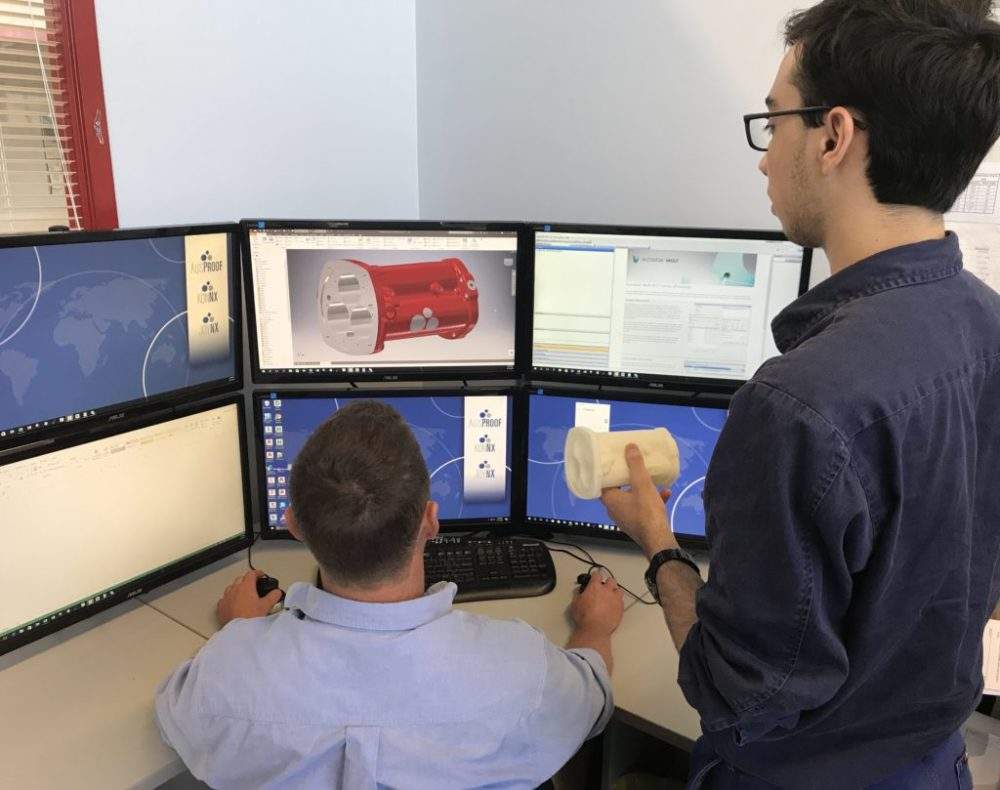
Rio2 is developing the Fenix gold project located in Copiapo Province, Chile. Image courtesy of Rio2 Limited.

First gold from the Fenix project is anticipated to be produced in late-2022. Image courtesy of Rio2 Limited.

The Fenix gold project is estimated to have a mine life of 16 years. Image courtesy of Rio2 Limited.
The Fenix gold project, previously known as Cerro Maricunga project, is located in the Copiapo Province, Chile.
Rio2 fully owns the project and is developing it through its subsidiary Fenix Gold Limitada.
Updated pre-feasibility study for the project was completed in August 2019. Construction is expected to be started in the fourth quarter (Q4) of 2021 while first gold production is anticipated in the Q4 2022.
The mine is expected to produce 85,000oz of gold a year through an estimated mine life of 16 years.
Fenix gold project location, geology, and mineralisation
The Fenix gold mine extends across approximately 16,050ha in Atacama Region of Chile. It is situated 140km from Copiapo in the Maricunga Mineral Belt, which contains more than 1.9 million kilograms of gold deposits.
The mine is located in close proximity to Kinross Gold’s La Coipa Au-Ag mine, Hochschild’s Volcan gold project, and Kinross’ Maricunga gold mine.
The Fenix mine has low-sulphidation mineralisation, with gold mineralisation occurring along the northwest-southeast corridor with a strike extension of 2.5km. It is further divided into three mineralised zones based on the distribution of gold in drill holes, outcrops, and trenches, namely Fenix North, Fenix South, and Fenix Central.
Fenix gold project reserves
The Fenix gold project is estimated to contain 116 million tonnes (Mt) of proven and probable reserves, graded at 0.49g/t Au. It is expected to contain 1.4 million ounces (Moz) of gold.
The measured and indicated resources are estimated to be 410.7Mt graded at 0.38g/t Au.
Mining and ore processing at Fenix gold project
The conventional open-pit design, involving drilling and blasting, followed by loading and hauling of ore, will be applied at the Fenix gold project.
The high-grade ore will be crushed in a single-stage gyratory crusher to obtain a P80 size of four inches, which will then be stockpiled.
The crushed ore will be re-handled and transported to the leach pile by trucks. The processing plant will include an adsorption, desorption and refining (ADR) plant with a capacity of treating 20,000tpd. The plant can be further upgraded to treat between 40,000tpd and 80,000tpd of ore.
The ore will be leached with a dilute sodium cyanide solution and the pregnant leach solution will be forwarded to an adsorption circuit with activated carbon to recover gold.
The resultant product will be forwarded to desorption and electro-deposition circuits, followed by filtering of the resultant electrolytic precipitate. The filtered material will be forwarded to a retort furnace and smelted to produce gold dore bars.
Infrastructure details
Access to the gold project is through the national road CH31. Two generators, operating in tandem with one being standby, will supply the required power for the operations. A connection to the grid is proposed in future, which is located within 25km from the project site.
Water required for the project will be provided by local firm Aguas Chanar under a contract. The water will be supplied from the Aguas Chanar facility by using 30t tankers and discharged to the site, covering a distance of 158km.
Workers will be accommodated at a 310-person camp located approximately 12km from the access roads.
Contractors involved
Mining Plus prepared the pre-feasibility study of the Fenix gold project while HLC Ingeniería y Construcción, Anddes Asociados, STRACON, and GeoSystems International prepared the capital and operating cost estimates.
Environmental and permitting matters were led by Chile-based MyMA while MM Consultores (MMC) supported HLC in designing the processing plant and on-site infrastructure.



